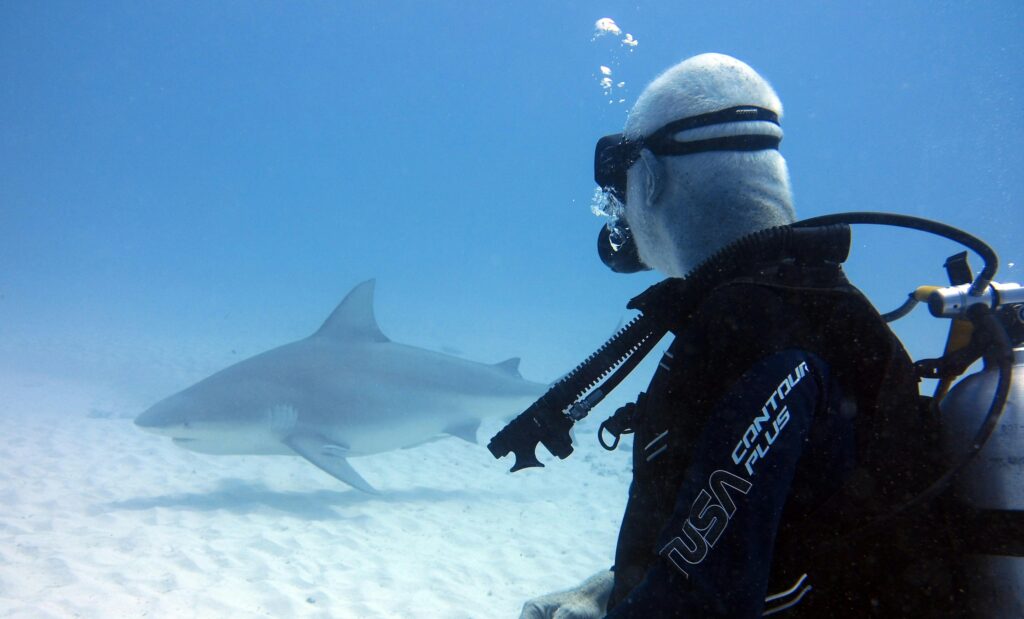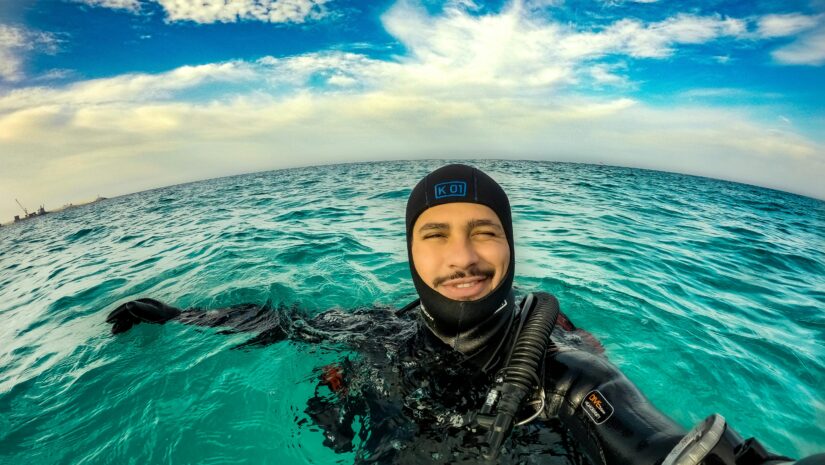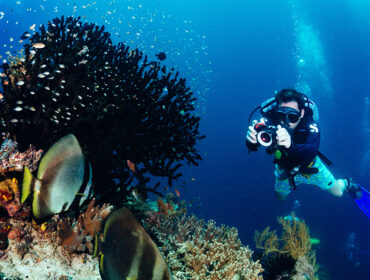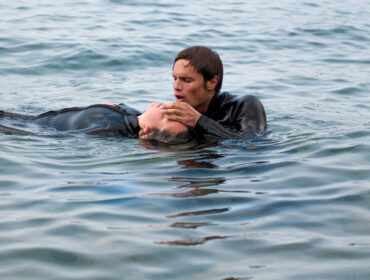Knowing how to use an underwater compass is a skill achieved at the start of scuba training. However, how much time have you really spent honing your navigational skills? Using an underwater compass can keep your dive on track, optimizing your bottom time as well as getting you back to your boat or the shore safely.
First, a little navigational terminology. Learning the lingo can help you become good friends with your compass. Everyone knows that a compass points north. Additionally, the part that handles that task is called “the card.” This is the spinning face of the compass that has N, S, E, and W printed on it. Its edges are angled at 45 degrees for one reason (I will get into that in a moment).

Around the perimeter of the compass is a movable ring called a bezel. The bezel has a line (sometime a double line) running through the center called the lubber line. This line is your directional marker. If you want to go southwest, you can turn the bezel to calibrate the lubber line in that direction, then follow it.
More ways to use an underwater compass
Another method of using an underwater compass is called side-window navigation. Once you orient the lubber line, with the side window of the compass facing you, you will see a number on the card through that window. This is where the angled design of the card comes into play. As long as you are seeing this same number through the window, you are heading in the desired direction. If you see a different number, make small adjustments until your number comes back into the window.

Never fear, you won’t spend all your time during the dive staring at your compass. You can also use the underwater scenery you’ve come to enjoy checking your position. Now, these are called waypoints. Look at your heading and then use that to reference an obvious landmark that is on a straight line visually. When you arrive at this way point, you can look ahead to find the next one. These visual cues will work in conjunction with using an underwater compass and allow you to enjoy all the sights that brought you into the sea to begin with.
Keep in mind that large metal objects can interfere with your compass’ magnet, causing what is know as “deviation,” so pay extra attention around shipwrecks and other iron or steel structures. Moving away from the object either laterally or vertically should correct the problem. Recheck your headings and you can get back on track.





